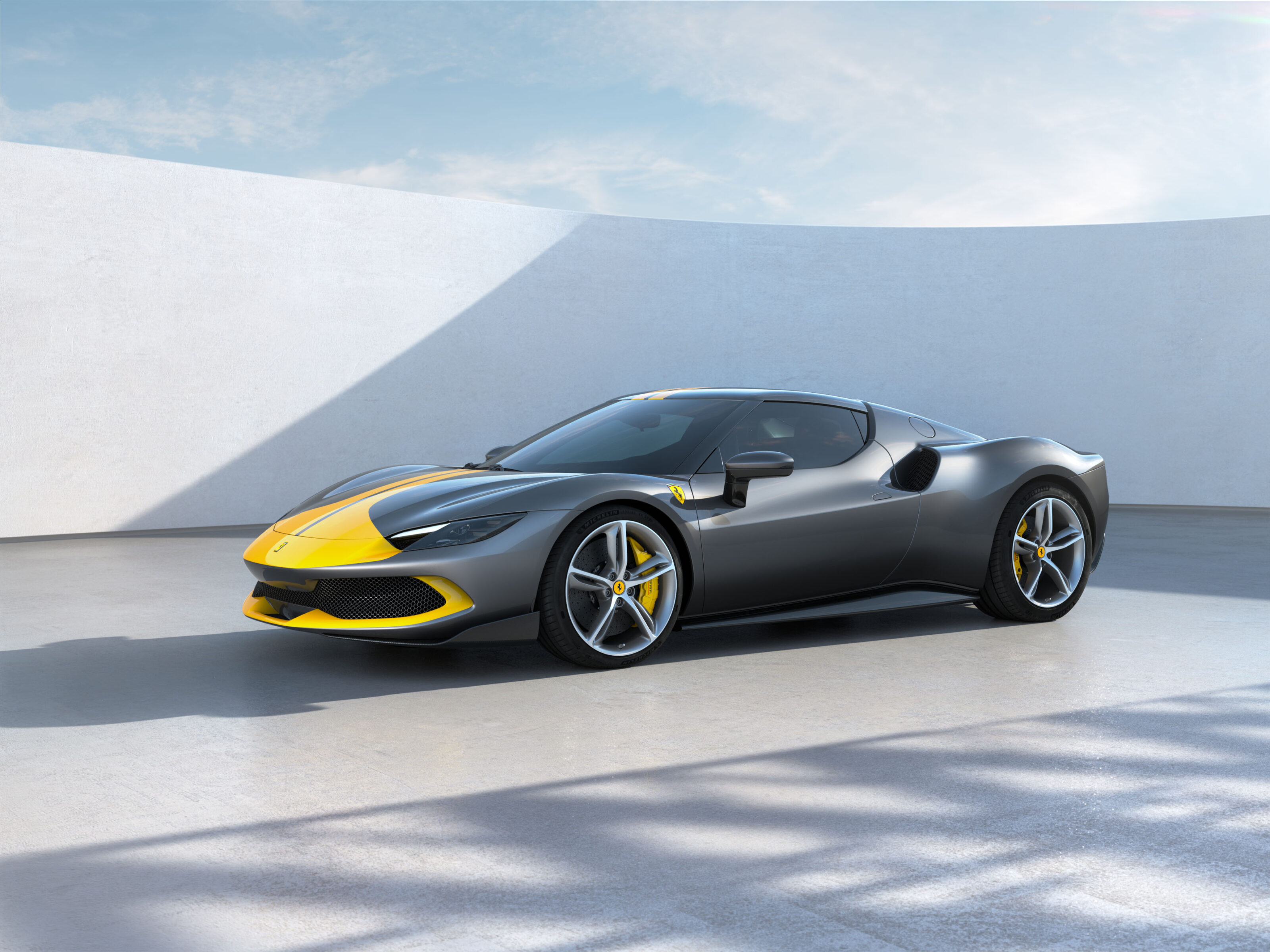Ferrari has its foot firmly on the throttle as it pushes further into a future demanding both lower emissions and higher performance.
The Ferrari 296 GTB is Maranello’s first return to a six-cylinder engine since the Dino 246 GT was launched back in 1974, but the addition of hybridisation means it’s far removed from an ‘affordable’ entry-level model. With huge outputs and ultra-advanced electronics, it’s a true junior supercar, and seems certain to ultimately elbow the F8 out of the Ferrari line-up. It’s also likely to cost about $500,000 when it makes it to Australia in 2022.
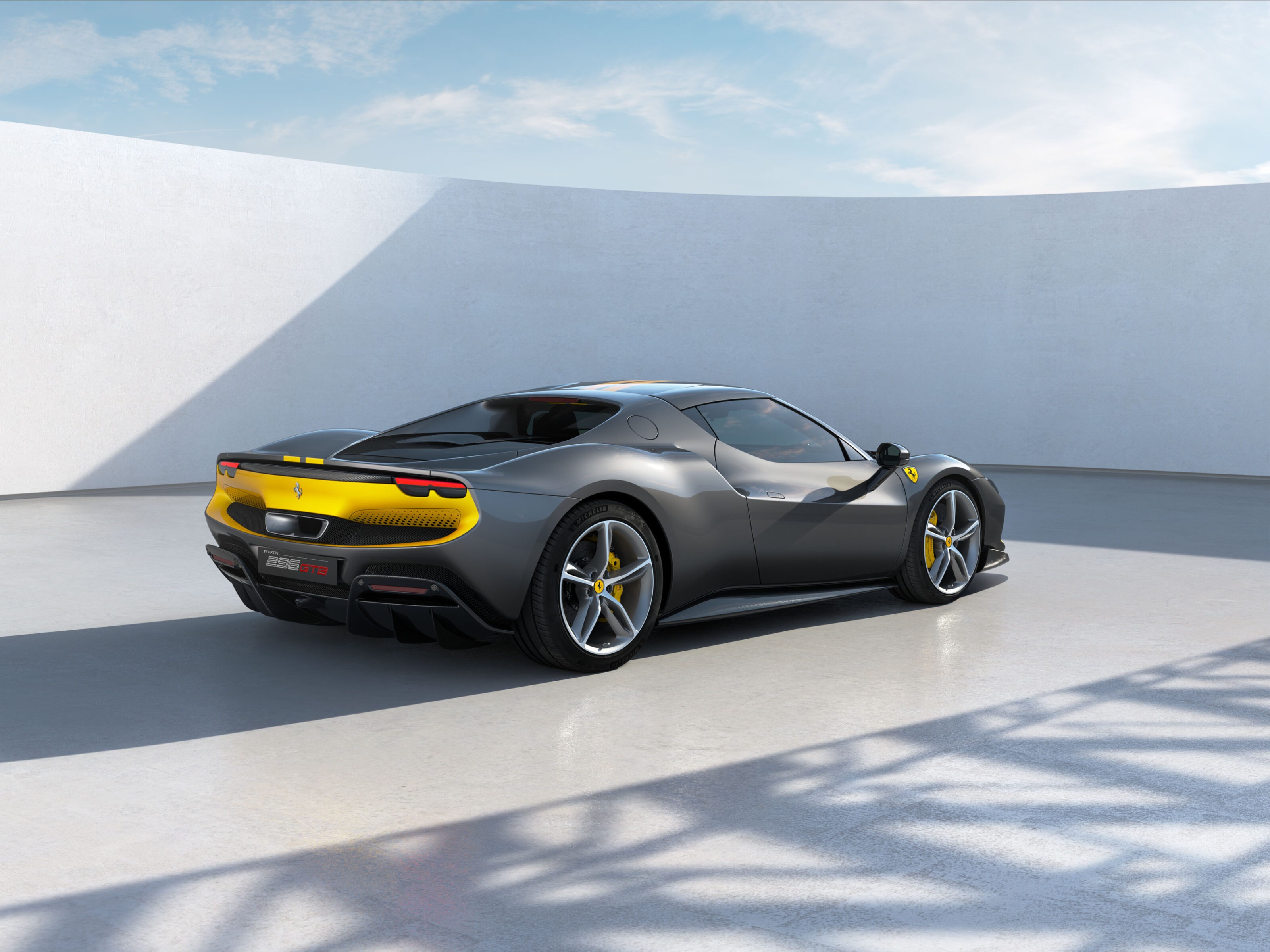
But back to that F163 twin-turbo V6, which is a genuine benchmark. Making a whopping 163kW per litre – 488kW from 2992cc – it boasts the highest specific output of any production car engine, toppling the AMG A45 S and its 155kW-per-litre M139 2.0-litre turbo.
With the optional Assetto Fiorano package, the 296 GTB is among the fastest horses to ever tackle Fiorano, posting the same lap time as the F12tdf of 1m:21sec. It’s a mere two seconds slower than the demonic SF90 Stradale hybrid.
Central to the 296 GTB’s stunning performance is all that Ferrari has learned from the SF90 and the F1- derived MGU-K e-motors and PHEV architecture. Applied to this rear-drive layout, the motor (sandwiched between the engine and eight-speed dual-clutch gearbox) delivers an additional 122kW, giving the new car total outputs of 610kW and 740Nm. A relatively small 7.45kWh battery pack offers a claimed pure-electric range of 25km up to a maximum of 135km/h.
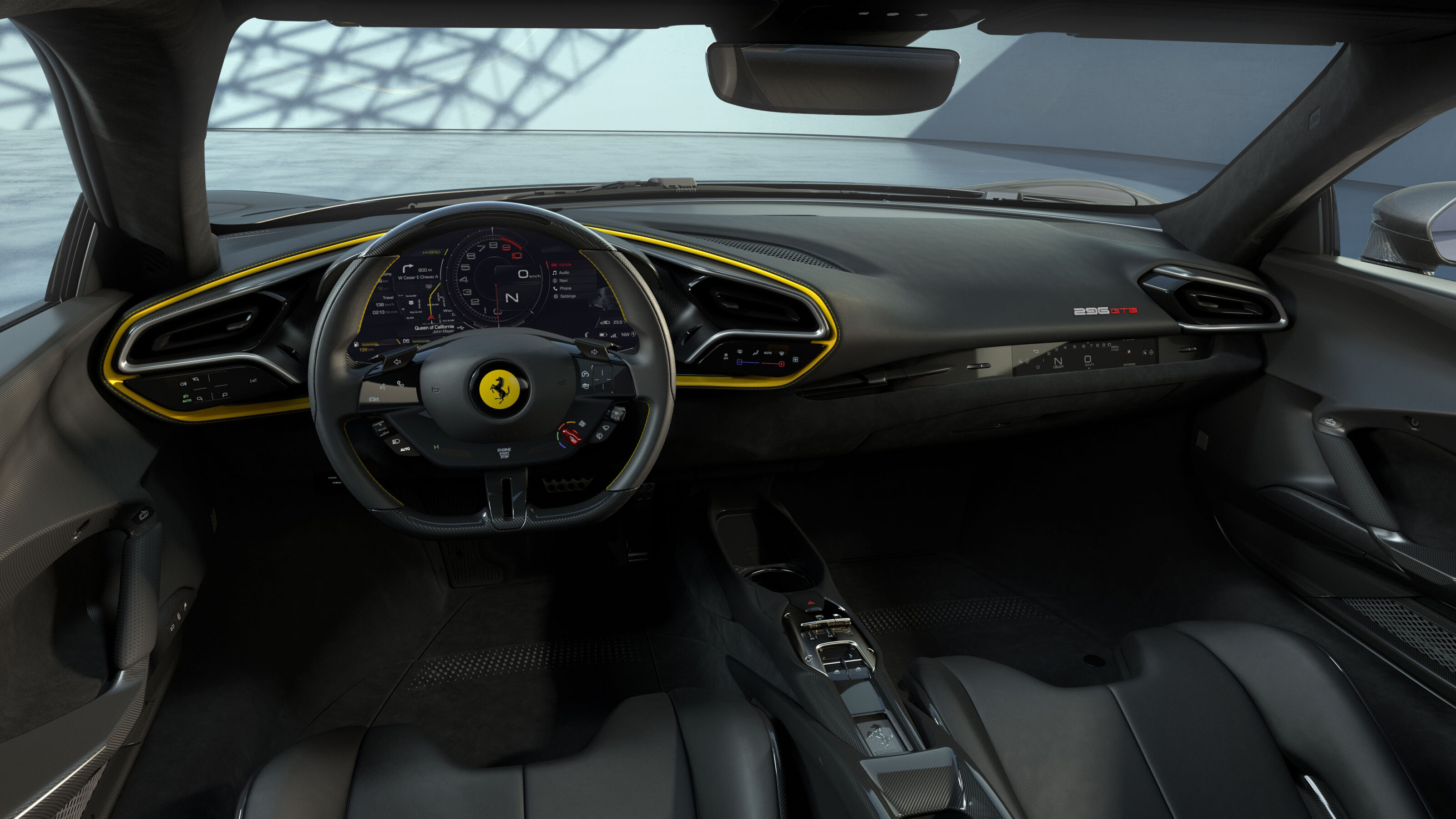
At the other end of its performance spectrum, the 296 GTB can hit 100km/h in 2.9 seconds, while 0-200km/h takes just 7.3sec.
For context, the recently revealed McLaren Artura, also running a hybrid V6 powertrain, hits that latter benchmark a full second later (8.3sec), suggesting that on both price and performance, the 296 GTB will be a closer rival for McLaren’s 720S.
The similarities to the Artura run deeper than powertrain layout. Like the McLaren, Ferrari has opted for a vee angle of 120 degrees, to improve packaging and efficiency. Two symmetrical turbochargers mounted within the engine vee can spin to 180,000rpm, while max engine speed is 8500rpm.
Central to the 296 GTB’s stunning performance is all that Ferrari has learned from the SF90 and the F1- derived MGU-K e-motors and PHEV architecture.
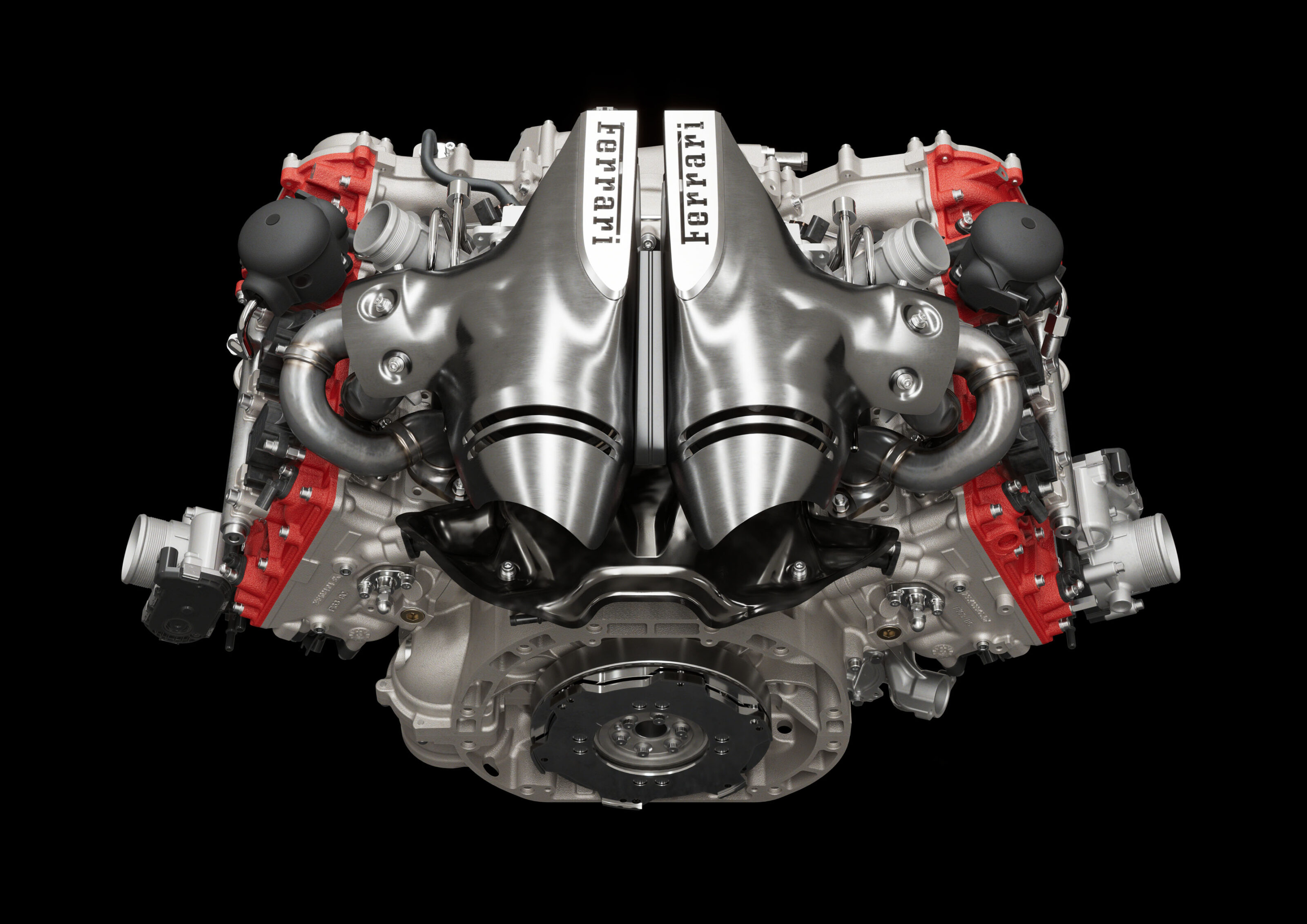
The F163 engine shares its bore and stroke with Maserati’s Nettuno engine powering the MC20 supercar, but both brands claim this is coincidence.
Arguably just as significant as the new engine is the revised chassis in which it sits. The 296 GTB runs a wheelbase a full 50mm shorter than that of the F8-based cars, assuring supreme agility, while the claimed dry weight is 1470kg, only slightly heavier than the V8 coupe, despite the 296’s motor and battery.
As well as being compact, the 296 also features the first use of six-way chassis dynamics sensors to feed data to an even more advanced version of Side Slip Control, the driver aid that helps manage drift angle. The software takes inputs from the chassis sensors and can estimate the amount of grip at the rear tyres to provide just enough ESC assistance to keep the car in a controlled slide.
Inside, a digital interface follows the SF90’s lead, but aims to simplify the user experience. Given the outlandish performance available, minimal driver distraction sounds like a very sound approach.
The reasoning behind the 296 GTB’s V6
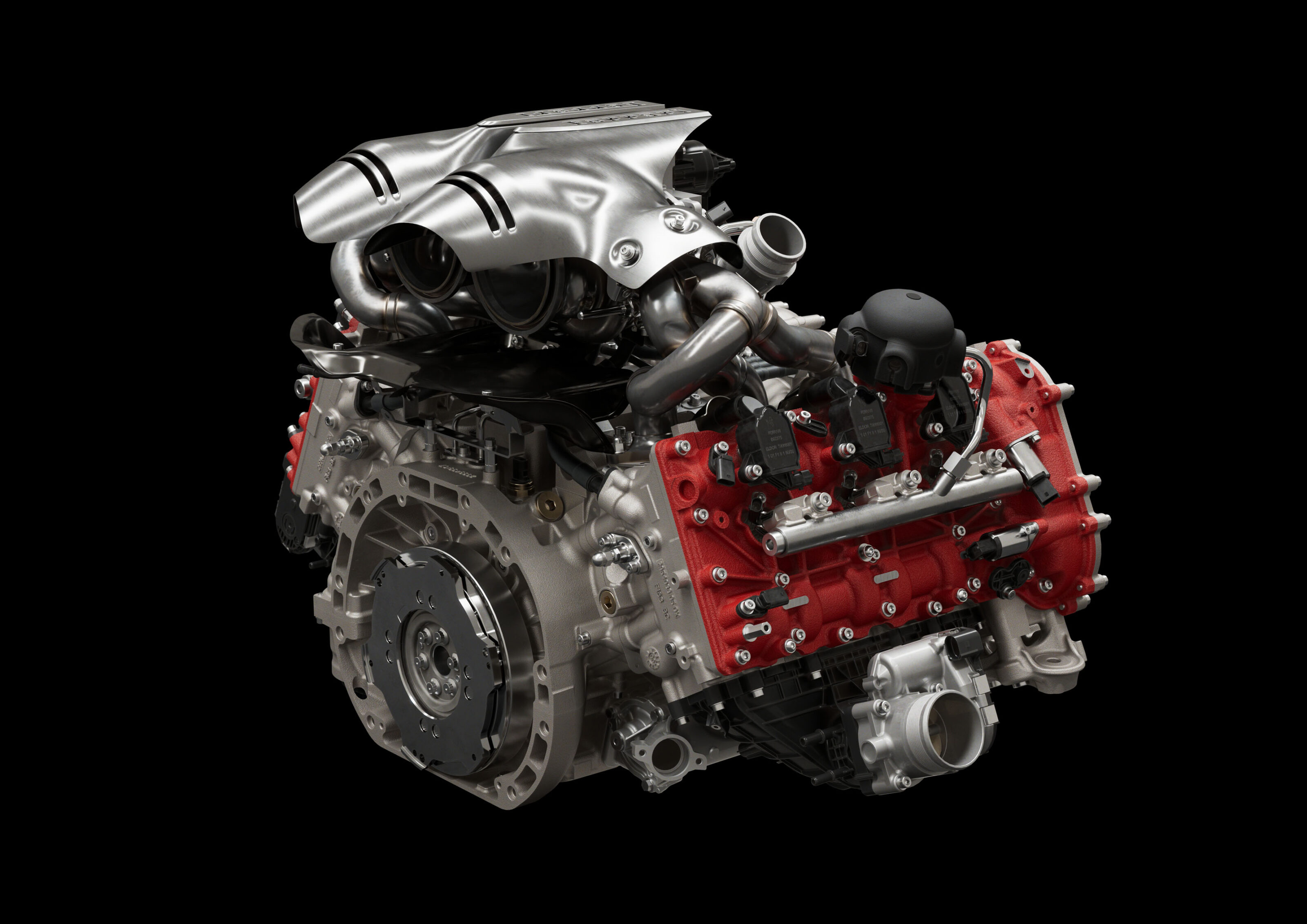
Both Ferrari and McLaren have now built 120-degree V6 engines. Why? Packaging and balance. The ultra-wide vee angle delivers an engine flatter than one at 90 degrees, lowering the CoG. It also leaves more space for mounting the pair of hot-vee turbos, allowing shorter plumbing and therefore more immediate response. Similarly, it allows the exhaust to be optimised for length and direction. Ferrari thinks the new V6 is so acoustically reminiscent of previous hero engines, it’s referring to it as the ‘piccolo V12’.
We recommend
-
 News
NewsFerrari relaunches the Testa Rossa as an electric scale replica
Buying a Ferrari for your child has never been easier
-
 News
NewsFerrari LaFerrari successor spied at Fiorano
Next-gen hypercar will likely feature N/A V12 with more hybridisation than ever before
-
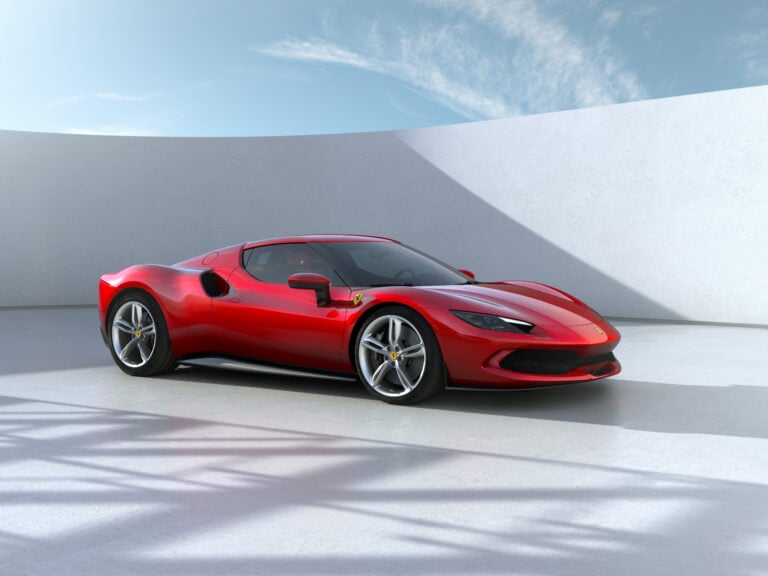 News
NewsFerrari 296 GTB debuts with hybrid V6
Wicked plug-in hybrid sports car is one of the fastest to come out of Maranello


